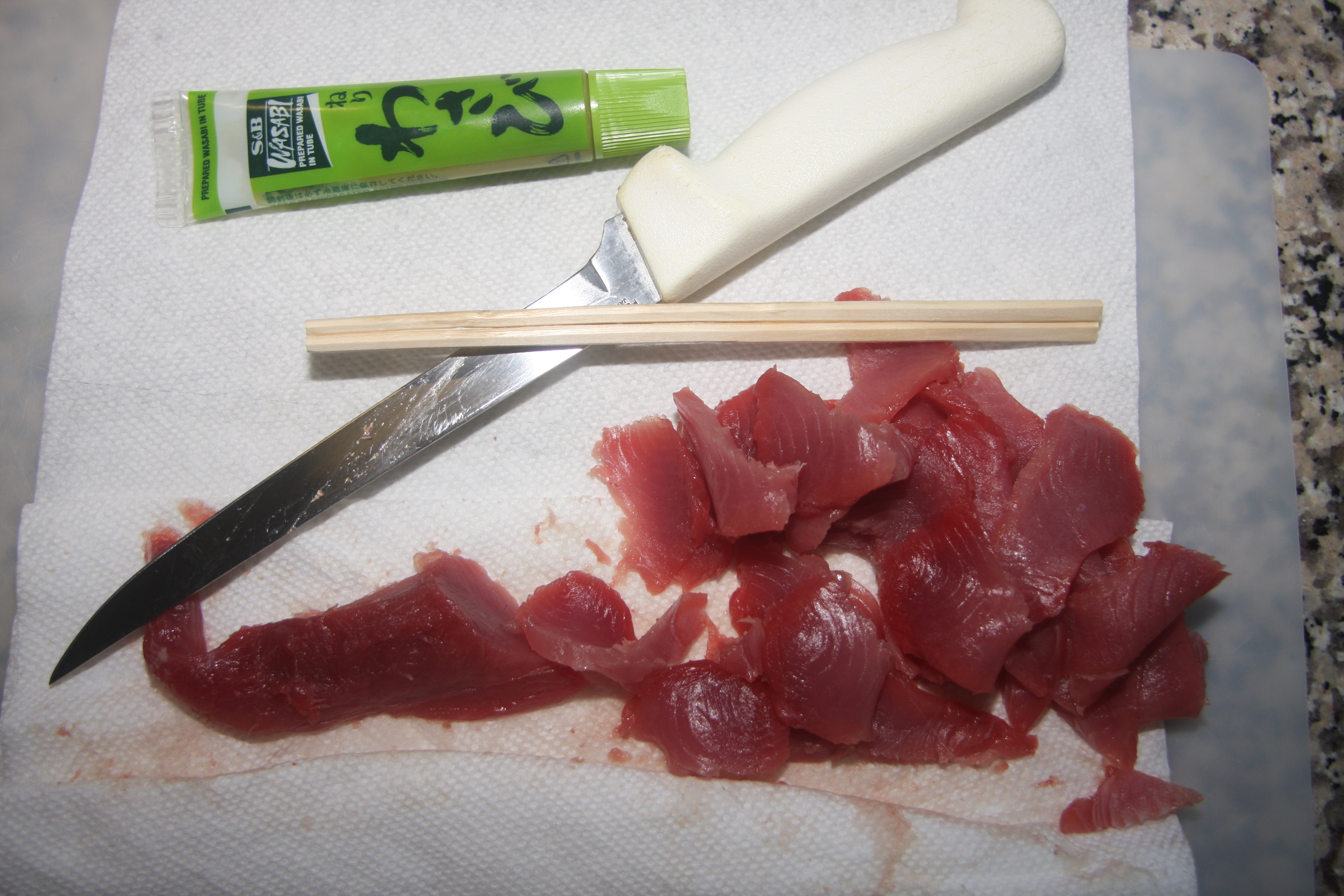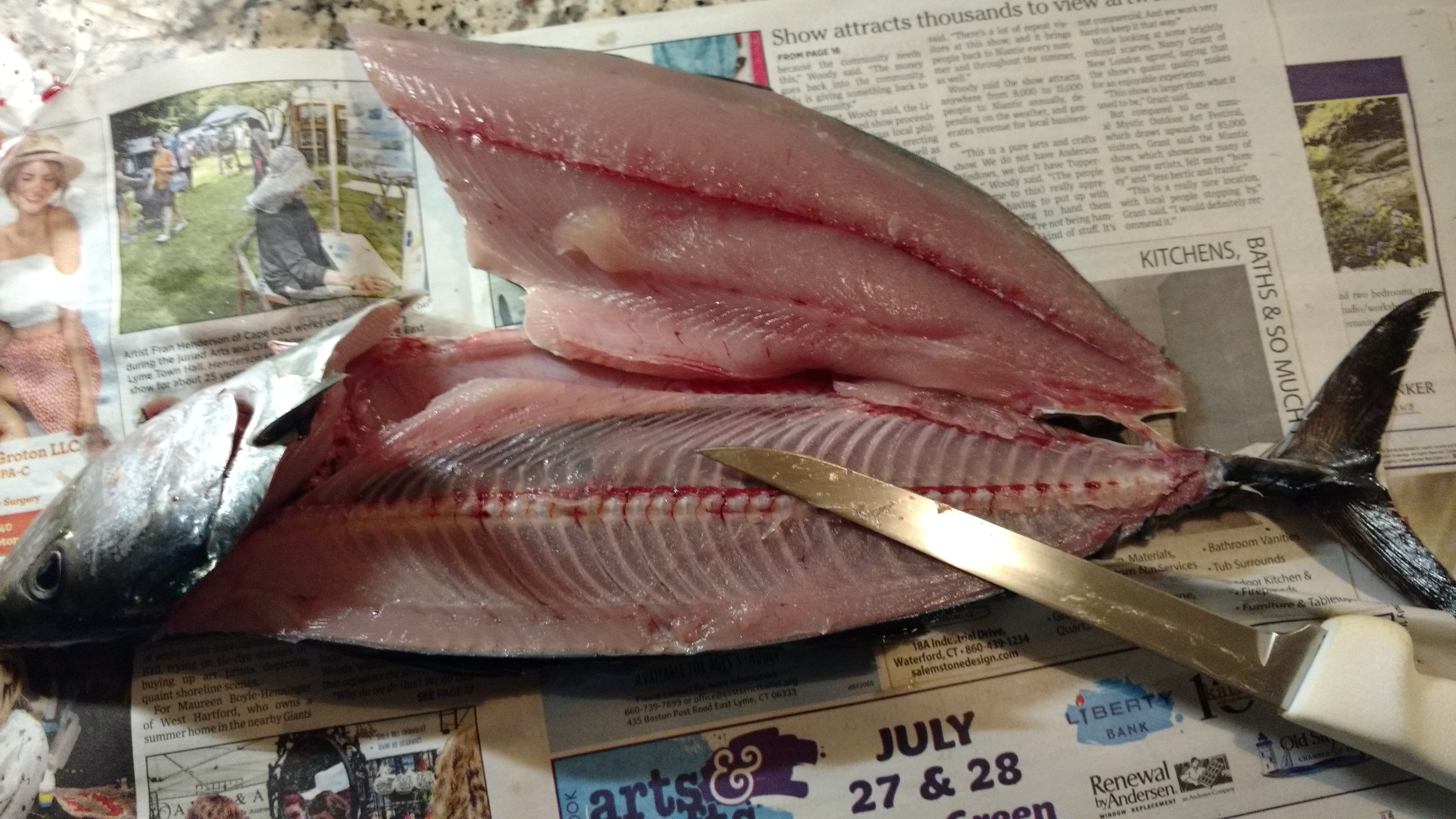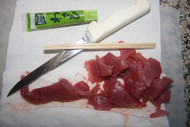Fillet Knives 101
Posted by Captain Tom Migdalski on 28th May 2021
The right knife makes easy work of your catch.
As my father always coached me, “Use the right tool for the job.” That
axiom is never truer than with fillet knives. The greatest benefit of using a fillet
knife is the slender—and therefore maneuverable—blade, which can debone a fish
while minimizing flesh loss. The same applies to skinning fish: fish skin can be
either thin and delicate or thick and tough, and skinning a fish with a wide,
inflexible blade often leads to ripped skin or gouged and lost flesh.
Best Size and Use

Fillet knives, while they can be used for carving cooked meat like turkey or
roast beef, are not ideal for that purpose and are most useful for preparing raw
fish or removing breast meat from raw poultry or fowl. Fillet knives have a thin,
narrow, and flexible blade, which enables a skilled person to bend and maneuver the
knife around a fish vertebrae or bird breastbone to obtain the most meat possible.
(How to debone a chicken breast:
, how to fillet every type of fish:
)
Fillet blades are typically 6 to 9 inches long but can be as short as 4 inches.
Boning knives, the rugged cousin of fillet knives, are used to debone tough cuts of
meat or to disarticulate joints, such as separating chicken legs into parts or
removing a fish head or tail from its body. Those actions can quickly dull the sharp
edge of a fine fillet knife. Curved blades enable cooks to carve or precisely fillet a
piece of meat or fish, while wider (taller) and straighter blades provide quick,
simple, and straight slicing like carving proteins or chopping vegetables (like a
classic chef’s knife). In summary, stiff blades are good for tough cuts of meat
such as pork, beef, and venison, while flexible knives are preferred for dressing
raw poultry and raw fish.
“It’s all in the flex,” says lifelong saltwater angler and knife expert Elliott
Taylor. “The willingness of the blade to bend and follow the contour of the fish will
directly translate to the quality of your fillet and minimize wasted meat. Match
your knife to the fish you plan on filleting. You wouldn’t want to use the same blade
on a 25-pound striper as you would on a crappie. The larger the fish, the
larger—and usually somewhat stiffer—the fillet blade.”
A 4-inch blade is suitable for small fresh- and saltwater fish such as
panfish, trout, shad, porgies, winter flounder, or harbor bluefish. A 6-inch blade
also works well on small fish but gives you the versatility of handling medium-size
species like fluke, black sea bass, blackfish, and jumbo porgies. An all-purpose 7-
inch blade is a great choice for processing larger fish like adult bluefish, doormat
fluke, and medium striped bass. When you move up to large fish like tuna, shark,
cod, or large stripers, a 9-inch is best.
The Science of Steel
Steel is primarily a combination of iron and carbon. All steels contain other
elements in small, controlled amounts including manganese, sulfur, silicon, and
phosphorus. If no other elements are added, the steel is called carbon steel, which
is softer and easier to sharpen, but its drawback is that it rusts easily.
Steels used for rust-resistant blades are enhanced with additional minerals
called alloy steels. These give different types of steel special properties. Alloy
steels are made of iron, carbon, and other elements such as vanadium, nickel,
copper, boron, and chromium. When other elements comprising metals and non-
metals are added to carbon steel, alloy steel is formed.
These alloying elements are added to increase strength, ductility, hardness,
wear resistance, corrosion resistance, and toughness. The amounts
of alloying elements may vary between 1 and 50% and are labeled “stainless steel.”
These are most frequently used in making knives, scissor blades, surgical
instruments, and cookware.
Increasing carbon percentage increases hardness. Adding
chromium improves hardenability, wear resistance, and rust resistance. It’s a major
element in the popular culinary Martensitic stainless steels. Molybdenum and nickel
improve hardenability, tensile strength, and rust resistance, especially less pitting,
while vanadium increases hardenability and promotes desirable fine grains.
Some of the qualities of steel are defined this way:
Hardness: Steel's ability to resist permanent deformation (measured on
the Rockwell Scale)
Hardenability: Steel’s ability to be hardened through temperature
treating
Strength: Steel’s ability to resist applied forces
Ductility: Steel's ability to flex or bend without snapping
Toughness: Steel’s ability to absorb energy prior to breaking
Initial Sharpness: Steel’s blade sharpness direct from the factory
Edge Retention: Steel’s ability to hold a sharp edge
Corrosion Resistance: Steel’s ability to resist environmental deterioration
Wear Resistance: Steel’s ability to resist wear and abrasion
Manufacturability: Steel’s ability to be easily machined, blanked, ground,
temperature-treated, and assembled
As steel is heated and cooled during manufacturing, its internal composition
changes. The structures formed during these changes are given names like
“Austenite” and “Martensite.” Martensite is a hard structure that’s created by
rapidly cooling steels after heat-treating. Metals that can form Martensite are
termed “Martensitic steels,” and it’s this steel that’s most useful in the cutlery
industry. Labels like S30V, BG-42, 154CM, 420HC, and 420J2 are all Martensitic
stainless steels. Each alloy recipe or type has exact specifications and is named
according to a number convention and have different price ranges. Martensitic
stainless steels, for example, have numbers like types 410, 420, and 425.
420J2, for instance, has a lower carbon content, and is a widely used,
general-purpose stainless steel. It offers fair hardness and corrosion resistance
and high ease of resharpening. It is ideally suited for knife blades with light to
medium use in routine applications at a reasonable price.
“Price here isn’t always as important as care,” says Taylor, “depending on
intended use. A $20 fillet knife with a synthetic handle that’s cleaned with soapy
water, hand-dried, and stored dry, will hold up better than a $140 blade with a
specialty handle that’s hastily thrashed in a bucket of water to get the blood off
and packed away wet, left in a salt environment, or run through a dishwasher. One
knife is best suited for the deck or marina cutting board while the other is best
for skilled food prep in a good kitchen.”
Japan and Germany have the reputation for making the best culinary knives.
Following them comes the USA. Knife metals from Taiwan are considered better
than steel from China, the latter of which is regarded as having the cheapest and
poorest quality blades.

Here’s a random sampling of fillet knives on the market, including point of
origin and approximate cost:
Wüsthof Classic Fish Fillet Knife, 7-inch, exclusive high-carbon steel,
professional quality, Germany, $140
Zwilling J.A. Henckels Pro Fillet Knife, 7-inch, 57 hardness on the Rockwell
Scale, Friodur ice-hardened, professional quality, Germany, $130
Zwilling J.A. Henckels Twin Four Star II, 7-inch, stainless-steel,
professional quality, Germany, $120
Shun Classic Flexible Fillet Knife, 7-inch, crafted of AUS8A, high-carbon
stainless steel, professional quality, hand-crafted in Japan, $100
Shun Classic Boning and Fillet Knife, 6-inch, VG-MAX super-steel blade clad
on each side with 34 micro-thin layers of stainless steel creating a
Damascus-style blade, professional quality, handcrafted in Japan, $100
AFTCO's 8", 10" and 12" fish fillet knives built in collaboration with Böker
Germany for premium blades featuring 4116 German stainless steel with full
tang construction and up-sweep design, commercial quality, 10-inch blade
$80, German steel assembled in Taiwan
Cuda 7-inch semi-flex, wide, professional fillet knife, Titanium-bonded non-
stick, US 40A carpenter steel, $80, China
Bubba Tapered Flex Fillet Fishing Knife, 7-inch, super-thin 8Cr13MoV Ti-
Nitride coated, rust resistant, $42, China
Dexter-Russell Fillet Knife, 7-inch and 8-inch blades with plastic sheath,
high carbon, high alloy, stain free steel, commercial quality, $25, USA
Cuda 6-inch fillet knife with sheath, 4116 stainless steel, $20, China
Mercer Culinary Millennia Narrow Fillet Knife, 8.5-inch, one-piece, high-
carbon, stain-resistant, $12, Japanese steel, Taiwan
In summary, as with other products, you get what you pay for. A $100-$200
German www.wusthof.com or Japanese shun.kaiusa.com boning, fillet, or other food
prep knife is a superior cutting instrument in a well-appointed kitchen for people
interested and skilled in high-quality meal preparation. These knives should be
carefully honed, handwashed, hand dried, and stored in a knife block. To see and
handle such elite kitchen cutlery, stop in at Kitch kitchmystic.com, which is a
remarkably well-stocked kitchen, knife, and cookware store in the Olde Mistick
Village oldemistickvillage.com in Mystic, CT, and speak with owner and knife expert
Dan Price.
“However,” concludes Taylor, “if you’re just looking for a beat-around-the-
boat or back-at-the-dock fillet knife on a budget, a Dexter-Russell
dexterrussellcutlery.com/Fillet-Knives for under $30 will do a fine job when
properly handled and maintained.”

